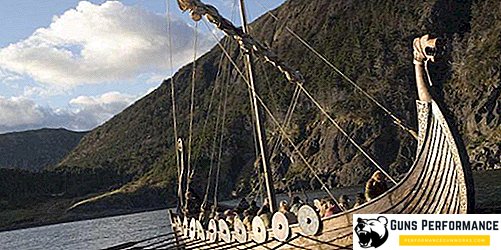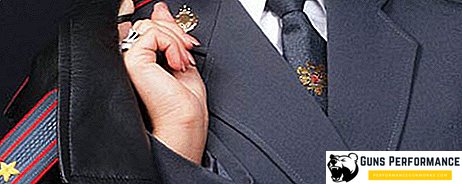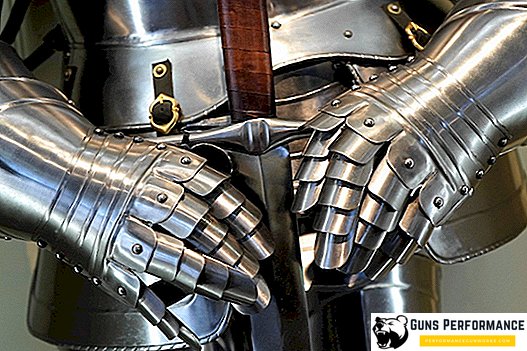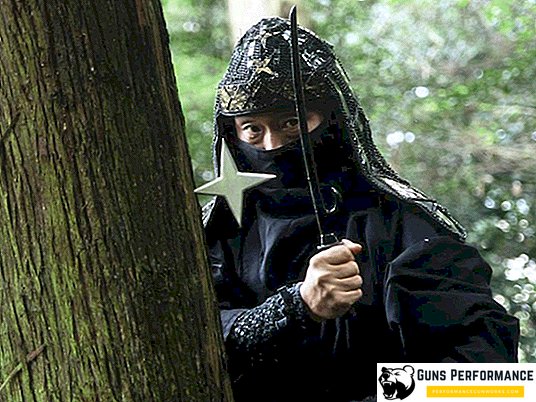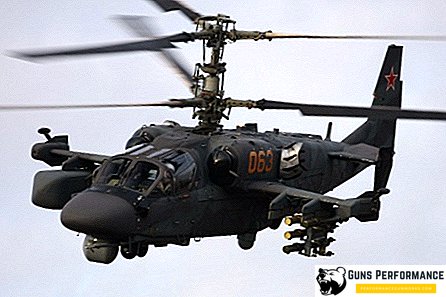The history of aviation knows many examples of strange aircraft, which at one time or another took off into the air. As a rule, these were experimental models, the fruits of a creative search for engineers who could not leave the walls of the design offices and did not go into the series. But there are a few exceptions in this rule.
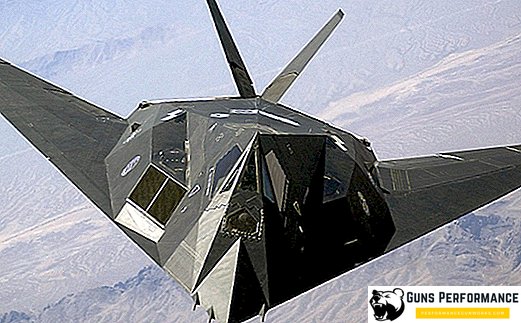
The American Lockheed F-117 Nighthawk combat aircraft has such an unusual shape and appearance that it would easily have won the competition for the most outlandish aircraft, if ever conducted. "Night Hawk" is very reminiscent of an exhibit stolen from a museum of cubism.
This machine is remarkable in many ways; the F-117 Nighthawk is the first production aircraft built using stealth technology. In other words, the Night Hawk has such low visibility for enemy radar that it is often called an invisible aircraft. But this name is more for the press. American pilots (especially those who flew it) gave the Lockheed F-117 Nighthawk a completely different name: Wobblin 'Goblin, which literally can be translated as "the lame goblin." This unflattering nickname unambiguously shows the attitude of pilots to the flight characteristics of the F-117 Nighthawk.
The Lockheed F-117 Nighthawk is a single-seater strike aircraft designed to penetrate the enemy’s rear and launch air strikes at any time of the day and in any weather. According to the developers, the technology "stealth" was supposed to deceive the enemy air defense system. "Night Hawk" was intended to strike at important enemy targets: headquarters, airfields, communications centers and air defense facilities.

F-117 Nighthawk managed to make war, he participated in several conflicts. In total, 64 aircraft were produced, the cost of one unit is more than 100 million dollars.
We can say that stealth technology has been tested on this aircraft, especially as regards the development of this technology during mass production. Maybe it was for this reason that the car turned out so ambiguous.
History of creation
Before describing the history of the creation of the F-117 Nighthawk, a few words should be said about the designation of this aircraft. In American military aviation, the letter "F" is used to designate fighters or their prototypes. How it got into the abbreviation "Night Hawk", which by its aerodynamic characteristics does not suit fighters at all, is unknown.

The F-117 is a strike aircraft that was designed to perform the functions of a tactical bomber or attack aircraft. Those authors who write about the F-117 stealth fighter are very far from the topic or know this car badly.
The interest in reducing the visibility of aircraft for enemy radar (stealth technology) arose from the US military after the American pilots visited the Vietnamese rocket jungle. Reducing the visibility of the aircraft for the radar station was considered one of the promising ways to increase their survivability, the work on the Stealth program began in 1965. Although interest in reducing the visibility of aircraft appeared in the military at the time of the appearance of the first radar stations.
The F-117 can be called the second-generation stealth aircraft, the first is the SR-71, the famous Cold War strategic reconnaissance aircraft. This machine was operated at the highest speeds, which heated the case by several hundred degrees, so it was not possible to achieve a high level of stealth, but the designers got pretty good results.

In 1977, the Xcom committee was created in the US military, whose task was the practical use of stealth technology. It was authorized to start three programs in this direction: Senior Prom (development of a cruise stealth missile), ATB (in the future it will lead to the creation of the B-2 strategic bomber) and Senior Trend, through which the F-117 will appear.
The development of the new aircraft was assigned to Lockheed Martin. Three-digit number is usually assigned to top-secret aircraft, so that all work was carried out in deep secrecy. The contract with the manufacturer was signed on November 16, 1978. The Pentagon has set the company's engineers the task of reducing all the characteristics of the aircraft, which unmask it. The customer was interested not only in the visibility of the radar, but also in reducing the thermal radiation of the aircraft, reducing its noise level, and eliminating any of its own radiation from the car and the inversion tracks.
Lockheed Martin coped with the task as quickly as possible: after eight months, construction began on the first machine, which was handed over to tests in 1981.

Naturally, the desire to reduce the visibility of the aircraft for radar led to a serious change in the shape of the F-117, which, in turn, significantly reduced the flight characteristics of the machine.
There is a legend that when Dick Cantrel, a leading specialist in aerodynamics of Lockheed Martin, was shown the desired shape of a future aircraft, he was hit. A little away from the shock, the designer realized that his department would not play the main violin when creating a new car. Therefore, he gave his staff the only task: to make the "lame goblin" at least somehow rise into the air.
The first tests showed extreme instability of the F-117 at once in many flight modes. There were other unpleasant surprises that the plane presented to its creators. They had to seriously refine the air intakes, change the design of the fuel tanks and bring the machine control system.
The use of technology "stealth" most hit on the maneuverability of the machine. The F-117 had a pretty good thrust-to-weight ratio, but its maneuverability and speed left much to be desired. In the control system of the aircraft were introduced restrictions that simply blocked the execution of certain maneuvers. In addition, the "Night Hawk" is very limited range and useless landing characteristics. In general, he had little to do with the "stealth fighter", which easily defeats opponents in Hollywood blockbusters.

They started operating the F-117 since 1983, at first this aircraft was top secret, for the first time the American military recognized the fact of its existence only in 1988. The first public demonstration took place in 1990, and a year later the F-117 was shown at an aviation exhibition in Paris.
For piloting a new aircraft, only experienced pilots were selected, who had a flight of at least 1 thousand hours, but this did not save from disasters. There is little information about them, since the program was highly classified. There is information that the first "Night Falcon" crashed in 1982, before taking the car into operation. Then there were a few more accidents.
Immediately after the appearance of the F-117 was really a formidable weapon. He could not find the radar of the USSR and China. Not seen "stealth" and fighters. However, the situation changed very quickly: radar detection devices were improved very quickly, and other aircraft detection technologies also appeared. So very soon the F-117 has already become only a relatively invisible aircraft, and the design flaws inherent in it, of course, have not gone away.
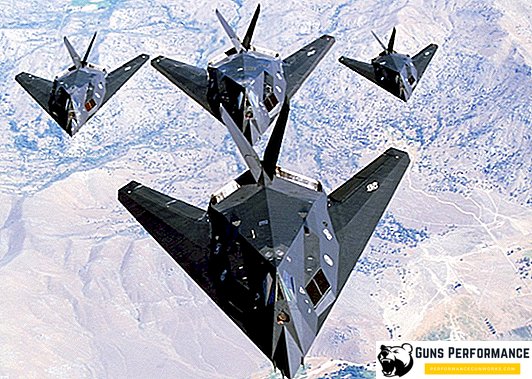
Description of construction
The F-117 strike aircraft is built according to the "flying wing" scheme. It has a V-shaped tail. The design of the machine is made using the technology of "stealth", this applies to the shape of the aircraft, and the materials used in its design.
The wing has a large sweep (67.5 °), the fuselage is made in the form of flat smooth panels, the angle of which is calculated to reflect the radar signal in different directions. This form of the fuselage is called faceted, and it is this that reduces the visibility of the aircraft by 90%. The pilot cockpit lantern is made on the same principle. It is coated with a special material containing gold. Such a coating eliminates the danger of exposure to the cabin equipment and the pilot's equipment (his helmet can fade on the radar screen more than the entire aircraft).

Chassis - tricycle. The front pillar has one steerable wheel, and the main pillars are also single-wheeled. The aircraft is equipped with a landing hook and a brake parachute.
Over the wings on both sides of the fuselage are air intakes. All the contours of the slots and connections have sawtooth edges, which also scatters electromagnetic waves. No external suspension, all weapons are located in the internal compartments. Flat nozzles are shielded with special heat-absorbing plates, which significantly reduce the visibility of the aircraft in the infrared range.
All antennas and other transmitters located on the surface of the aircraft can be retracted inside the hull. The design of the F-117 were actively applied composite radio absorbing materials and coatings. The whole body is covered with several kinds of similar materials, which are pasted on it, like wallpaper on the wall. The plane is painted with black ferromagnetic paint, which not only absorbs radio waves, but also perfectly dissipates heat.

Due to the above design features, the F-117 has a much smaller effective dispersion area (EPR), which is 0.1-0.01 m2. This is several hundred times smaller than the EPR of an ordinary aircraft of similar size. Thus, detecting an aircraft using ground-based radar or a fighter radar is very difficult.
Although, if the enemy fighter does detect the F-117, then the latter will have almost no chance.
The "Night Hawk" does not have its own radar, to reduce the risk of detection, all navigation systems and aiming of the aircraft are passive. There are also no active electronic warfare systems (EW). For navigation, satellite and inertial systems are used. Sights are represented by infrared cameras and laser illumination of the target, which is turned on for a very short time.

The power plant consists of two General Electric F-404-GE-F1D2 two-circuit turbojet engines, each of which develops a thrust of 4,900 kg.
The F-117 carries missile and bomb weapons, and can also use nuclear ammunition. Typical weapons for the aircraft are the bombs GBU-10 or GBU-27, can take on board the AGM-88 HARM, AGM-65 "Maverick" missiles.
"Night Hawk" - a very highly specialized aircraft, it is designed for strikes at night on important objects of the enemy. All the weapons that he can take on board is controllable. It has a very high accuracy (± 0.1 m).
The F-117 strike aircraft is very unstable in terms of yaw and pitch; therefore, a special program has been introduced into its control system that prevents the pilot from performing dangerous maneuvers.
Combat use
The aircraft was operated from 1983 to 2008, he managed to take part in several regional conflicts. During the operation, seven aircraft were lost, only one of which was hit by enemy anti-aircraft fire. The rest crashed in accidents caused by the pilots or due to technical malfunctions.

The baptism of the F-117 was the invasion of Americans in Panama in 1989.
For the first time these planes were massed during Operation Desert Storm in 1991. F-117 during this conflict showed a very high efficiency: overnight they destroyed almost all of the Iraqi Tu-22.
The next conflict in which the Americans massively used this aircraft was the war in Yugoslavia in 1999. It was then that the invisible plane was shot down. He was destroyed by a Serbian anti-aircraft battery armed with an obsolete Soviet anti-aircraft complex C-125. The Serbs claimed the destruction of one or two more cars, but this data is quite controversial.

The last significant conflict in which the F-117 was involved was the second Iraqi campaign of the USA (2003).
Initially, this aircraft was planned to be used until 2018, but the high costs of the F-22 Raptor and F-35 programs forced the US military to abandon it almost a decade earlier.
Already in the middle of the last decade, the Night Hawk was a morally obsolete machine. Due to the rapid development of aircraft detection tools, he lost his main advantage - the title of "stealth aircraft", and the design flaws incorporated into it initially turned the F-117 into a very expensive and extremely vulnerable machine. Yes, and the cost of service "Night Hawk" was quite high, so this solution looks quite natural.

The F-117 has become a real booth on which the Americans worked out all the nuances of using the technology "stealth". This aircraft can without exaggeration be called a unique machine, the F-117 was the first in its class, so it can forgive many flaws. In many respects, thanks to the “Night hawk”, fifth-generation “invisible airplanes” of the F-22 Raptor and F-35 rose to the sky.
Flight performance
Below are the LTH of the F-117A strike aircraft.
| Modification | F-117A |
| Wingspan, m | 13.30 |
| Aircraft length, m | 20.30 |
| Airplane height, m | 3.78 |
| Wing area, m | 105.90 |
| Sweep angle, hail | 67.30 |
| Weight, kg | |
| empty aircraft | 13381 |
| takeoff weight | 23625 |
| fuel | 8255 |
| engine's type | 2 TRDD General Electric F404-GE-F1D2 |
| Thrust, kn | 2 x 46.70 |
| Maximum speed, km / h | 970 |
| Cruising speed, km / h | 306 |
| Landing speed | 227 |
| Ferry range, km | 2012 |
| Combat range, km | 917 |
| Practical ceiling, m | 13716 |
| Max. operational overload | 6 |
| Crew | 1 |



